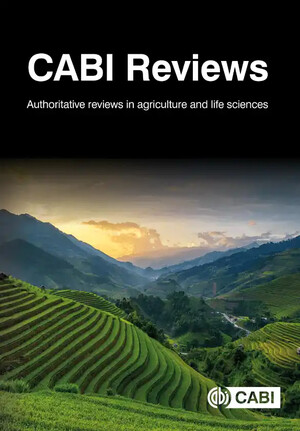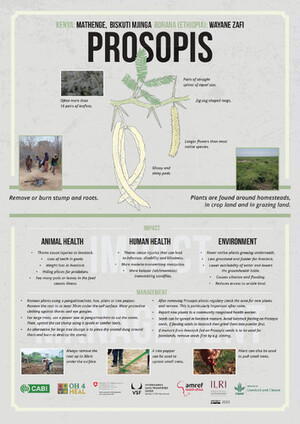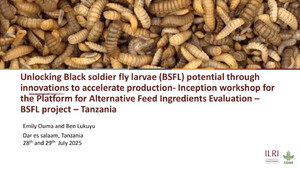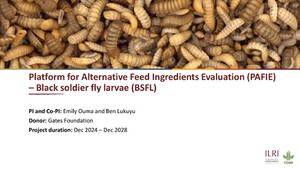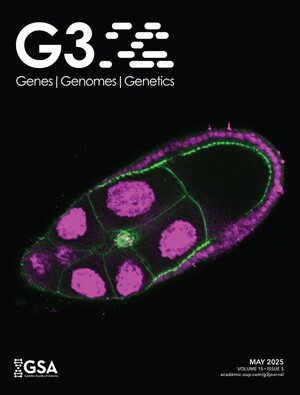
Forage from cropping systems as dry season supplements for sheep
Abstract
Information on the utilisation of legume hays from an intercropping system as a feed supplement is limited. Three forage legume hays (Stylosanthes guianensis, Lablab purpureus and Aeschynomene histrix) were compared by feeding them as supplements for yearling West African Dwarf rams (LWt 18.0±2.2 kg) fed a basal diet of mature guinea grass (Panicum maximum). The performance of the rams was evaluated in a 60-day growth trial, using a completely randomised design with 6 rams per treatment. Organic matter digestibility and nitrogen retention were assessed in a separate trial using the same design; but with 4 animals per treatment. In the growth trial, rams supplemented with S. guianensis and A. histrix gained more weight (P<0.05) than those on the L. purpureus supplemented diet. Average total weight gains were 33.3, 13.2 and 31.2 g/d for S. guianensis-, L. purpureus- and A. histrix-supplemented diets, respectively. Organic matter digestibility was 643, 568 and 523 g/kg for S. guianensis-, A. histrix- and L. purpureus-supplemented groups, respectively. All treatments resulted in positive nitrogen balance. We concluded that feeding forage legumes from cereal-based cropping systems as a supplement can maintain liveweight in sheep and even achieve modest weight gains during the critical dry period when feed quality is poor.
Citation
Tropical Grasslands;36(2): 102-106





